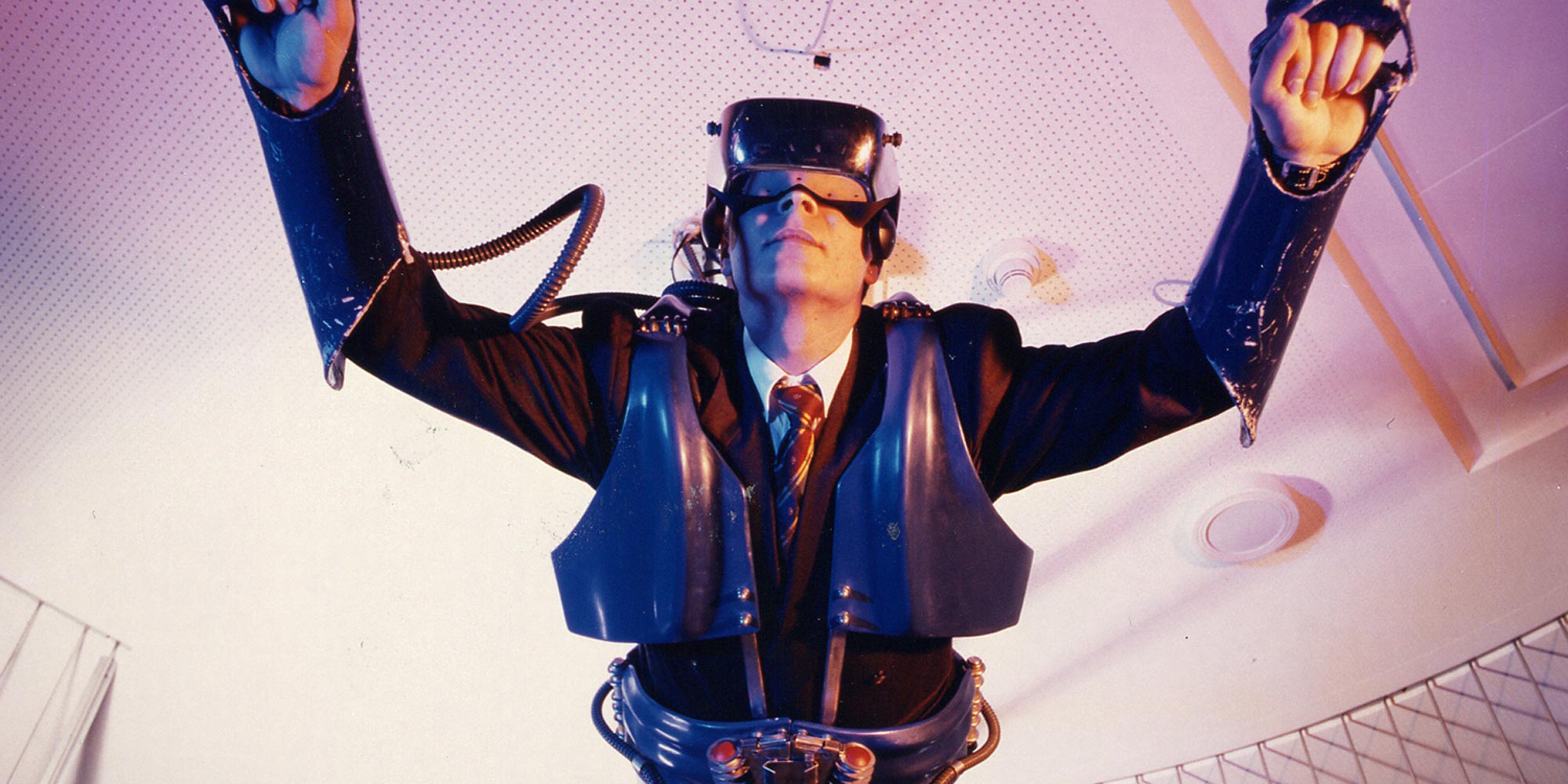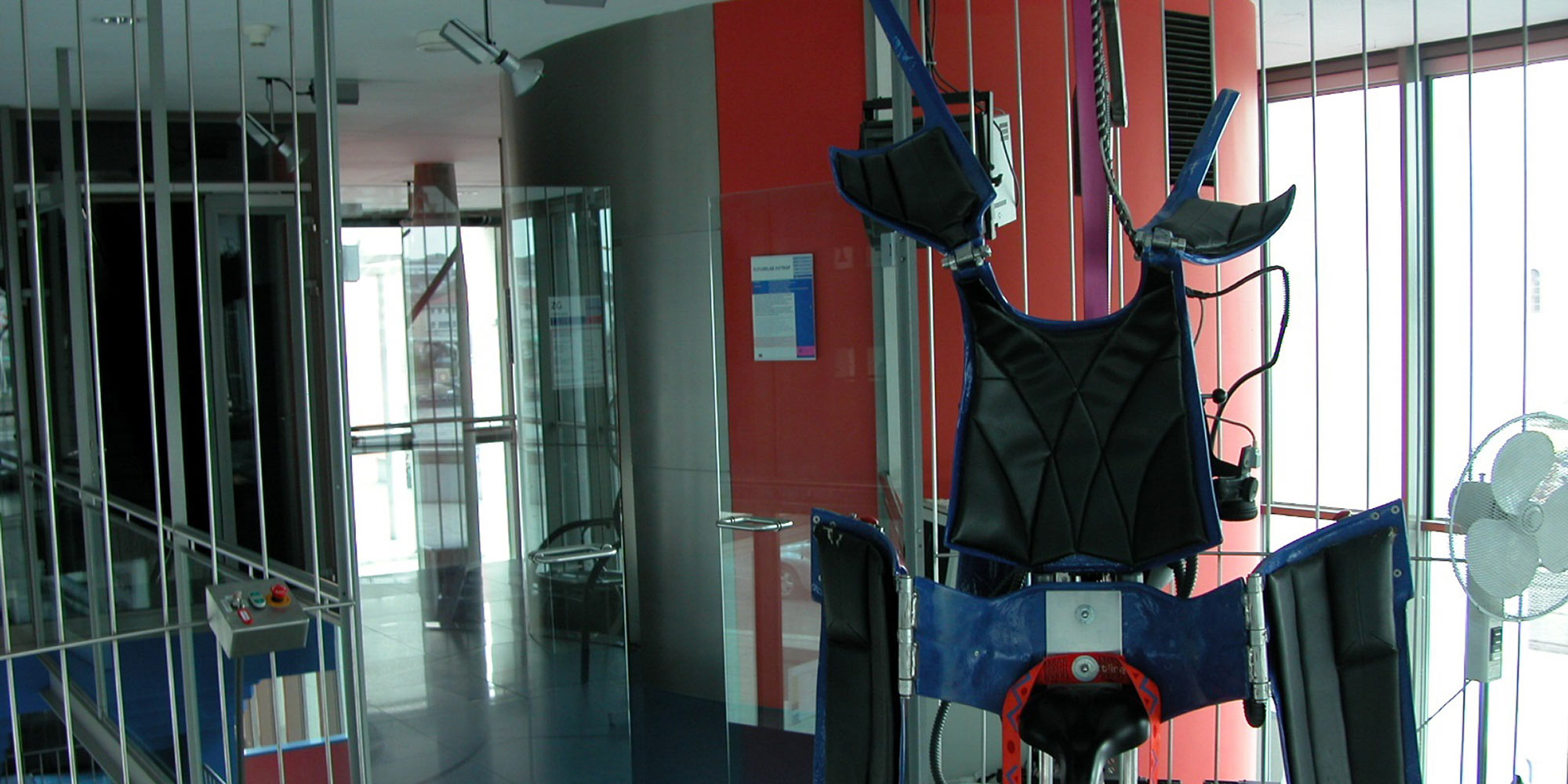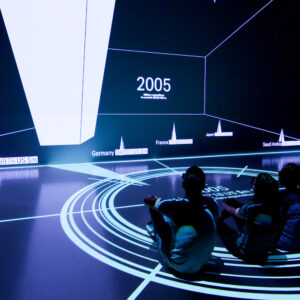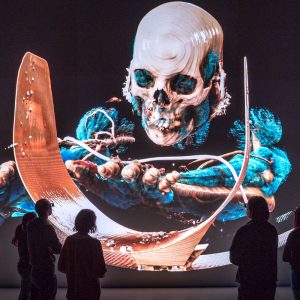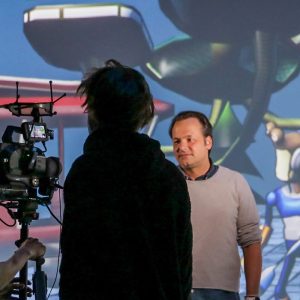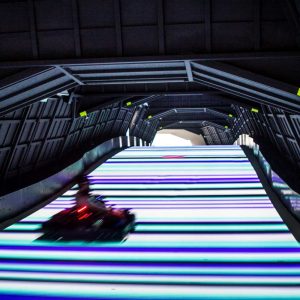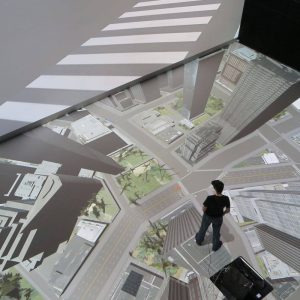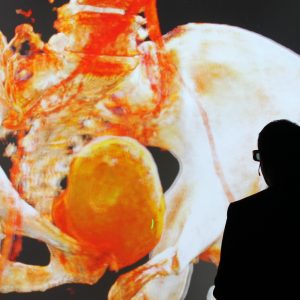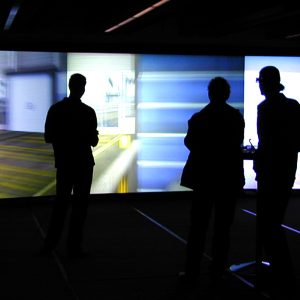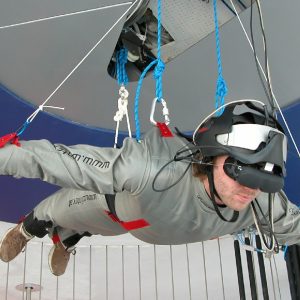Humphrey was no conventional flight simulator. It was a special construction that let users fly through virtual worlds. Unlike conventional flight simulators that simulate „flying a vehicle“, “Humphrey” simulated the flying itself… free as a bird, a Superman or Supergirl.
Strapped into a specially constructed rig, the user took off on a flight through digital worlds, viewing 3-D images of the surroundings by means of a head-mounted display. The flight path was not determined by conventional steering devices but rather by the user’s head and hand movements, which provided for an especially realistic flight experience.
With its futuristic appearance, “Humphrey” was not a space capsule that users climbed aboard but rather a technical apparatus strapped on like a backpack. The exterior shell consisted of pads that partially enwrapped the body to hold the user in flight position. The “flier,” however, remained recognizable as a human being, which was one of the chief aims of the design of this device.
The virtual environments were interchangeable. Besides a flight above the landscape of Upper Austria, users could also experience a vision of the future of the Ars Electronica Center.
Humphrey was further developed and enhanced by the Futurelab and finally presented at the Ars Electronica Center in a new design as Humphrey II.
Credits
Horst Hörtner, Gerhard Empl, Jürgen Kern, Thomas Kienzl, Dietmar Offenhuber, Gerda Palmetshofer, Gerfried Stocker
In cooperation with: Thomas Kienzel, Andreas Behmel, Tom Knienieder/WX WORKX system. Digital Elevation Model: DORIS Projektgruppe. Supported by Brau AG
Related Projects
Take a look at some of our other projects
From our never-ending list of ideas and concepts we have compiled a selection of works related to the topics addressed in this project. An overview of all our productions, cooperations and projects can be found in our continuously growing project archive.
